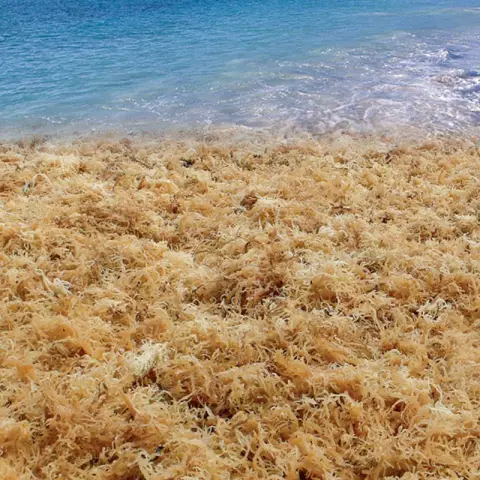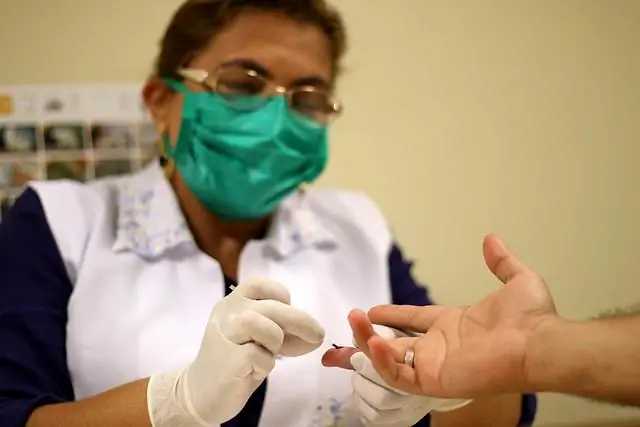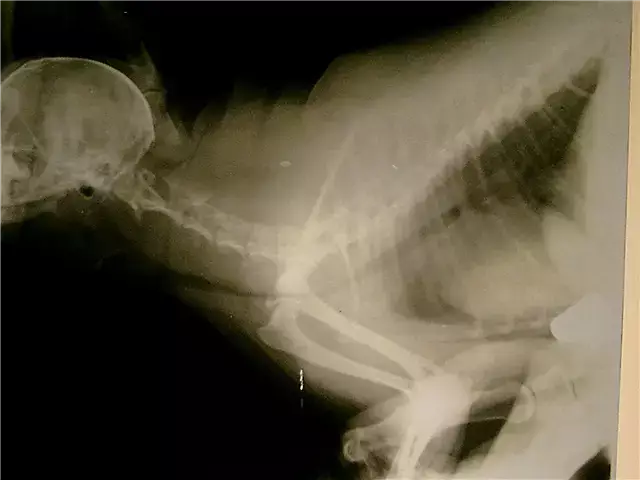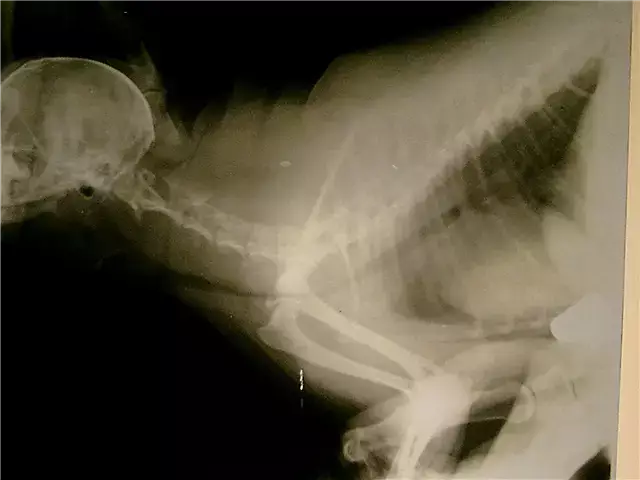- Author Rachel Wainwright [email protected].
- Public 2023-12-15 07:39.
- Last modified 2025-11-02 20:14.
Carrageenan

Carrageenan (E407) is a family of linear sulfated polysaccharides that are extracted from red algae found in the Atlantic Ocean in the UK, continental Europe and North America. There are three main classes of carrageenan, which differ in the degree of sulfation:
- Kappa carrageenans, which have one sulfate group per disaccharide;
- Iota carrageenans, which have two sulfate groups per disaccharide;
- Lambda carrageenans, which have three sulfate groups per disaccharide.
Kappa class are solid gels that react well with milk proteins. Iota class - soft gels that are easily combined with calcium. The lambda class is used as a thickener.
Traditionally, Irish moss was used for the production of carrageenan, but nowadays the species Eucheuma Cottonii is used to obtain carrageenan of the kappa class, Eucheuma denticulatum is used for the iota class, and the Gigartina species for the lambda class.
Carrageenans are of two types: peeled and semi-peeled. Purified carrageenans are obtained by boiling algae in an alkaline solution for several hours, after which the solid parts of the algae are filtered out. The resulting carrageenans are concentrated and removed from the solution, and then dried. This extraction method has been used for hundreds of years, although it is slow and expensive.
Semi-purified carrageenans are obtained by boiling algae in an alkaline solution that contains potassium hydroxide. Potassium prevents the carrageenan from dissolving in solution, but allows the proteins and carbohydrates of the algae to dissolve. The algae are then removed from the solution, washed and dried. What remains is the carrageenan cellulose is ground into powder.
You can make carrageenans at home by boiling Irish moss for about 20-30 minutes. Then the resulting mixture is cooled and the remaining moss is removed from it. Much of the carrageenan will float in the water as a gelatinous substance.
Carrageenan application

Carrageenans are widely used in the food industry as thickeners, stabilizers and emulsifiers. They give the food a smooth texture and flavor. They are often used in dairy products such as kefir, sour cream, milk chocolate, cream, ice cream, yogurt and cottage cheese because carrageenans react with milk proteins. They are also used in the production of soy milk, almond milk, and coconut milk.
Carrageenan is a non-animal gelatin alternative that makes it suitable for vegetarians.
Carrageenans are also added to jellies, beer, sherbets, spices, fish products, icings, fruit muffins, donuts, pies, chocolate, juices, and as a fat substitute in canned meats.
Carrageenan is used as a stabilizer in the manufacture of non-food products such as toothpaste, air fresheners and hair gels.
In chemistry, carrageenan-based gels can be used to immobilize cells.
In addition, as a stabilizer, carrageenan is added to some types of aerated concrete to thicken the foam and make it more sticky.
In Europe, it is forbidden to add carrageenans to baby food and formula.
Carrageenan harm
According to research by the US NCI Institute, it has been proven that a certain type of carrageenan - degraded carrageenan - can lead to diseases of the gastrointestinal tract, including bowel cancer. The degraded type of carrageenan is not commonly used in food, and only the non-degraded type of carrageenan has been recognized as safe for human consumption and approved for use in food.
The harm of carrageenan is due to the fact that it can cause inflammation in the body. This effect is so obvious that some researchers at the University of Illinois use this supplement to induce inflammation in scientific experiments. Carrageenan, during the breakdown of foods in the stomach, releases hazardous substances that are the basis of more than 100 diseases, including rheumatoid arthritis, atherosclerosis and inflammatory bowel disease.
Found a mistake in the text? Select it and press Ctrl + Enter.






